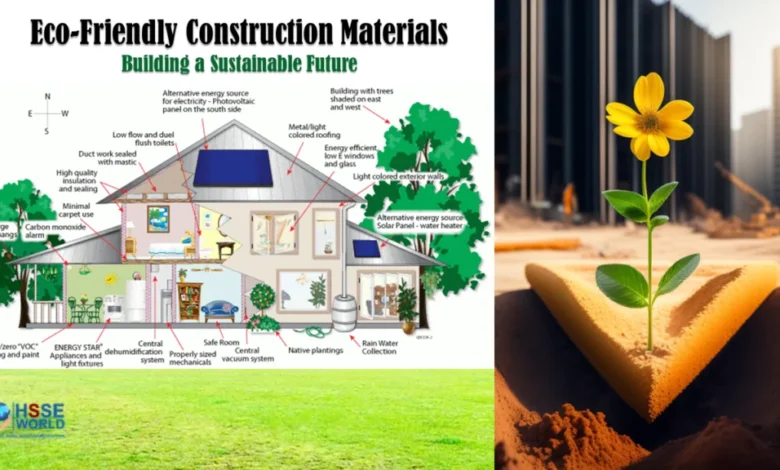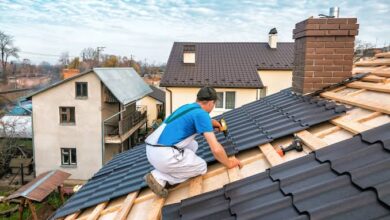Innovations in Green Insulation: Eco-Friendly Products for Sustainable Living

As climate change continues to threaten the health of our planet, more and more people are looking for ways to reduce their carbon footprint and live more sustainably. One area of focus has been improving the energy efficiency of homes and buildings through better insulation materials and techniques.
Traditional fiberglass and foam insulation often rely on petrochemicals and other non-renewable resources which can be energy-intensive to produce.
However, innovations in sustainable “green” insulation provide an eco-friendly solution.
What Makes Insulation Green?
Green insulation refers to environmentally friendly insulation options. These insulation products ar usually made out of renewable and recyclable materials. They are non-toxic as well. The main objective of such insulation products is to reduce our dependency on fossil fuels. Moreover, we can use green insulation to reduce the environmental impact we create throughout the lifecycle. They include end of life disposal and decomposition as well.
Types of Green Insulation Materials
You can find many different green insulation options available out there. Green insulation materials include:
- Cotton – Made from recycled denim or other waste cotton materials, cotton insulation contains no irritating fibers. It delivers excellent thermal and acoustic insulation properties.
- Cellulose – Cellulose insulation is comprised of recycled newspaper, cardboard and other paper materials. Non-toxic fire retardants are added to increase safety. Cellulose is a high-performance insulation material and directly contributes to landfill diversion.
- Sheep’s Wool – Sheep’s wool contains natural lanolin allowing it to repel moisture and resist compacting. It can be safely composted at end of life. Wool insulation provides good insulation value and noise reduction.
- Hemp – Hemp fiber insulation offers high insulation ratings. As a rapidly renewable material, industrial hemp is carbon negative to cultivate. Hemp insulation is naturally mold and pest resistant.
- Straw – Agricultural straw, such as wheat and rice straw, make for lightweight and affordable natural insulation. Straw bale construction is an established sustainable building method.
- Perlite/Vermiculite – Perlite and vermiculite are natural volcanic minerals which are super-heated and expanded into porous, lightweight particles. They trap air to provide insulation value and are commonly blended with other materials.
- Recycled Denim/Jeans – Recycling old denim into insulation keeps textile waste from landfills. Denim insulation is affordable, relatively low-allergen and contains some recycled cotton content.
- Recycled Plastic – Some green insulation products repurpose scrap plastics from industrial processes which might otherwise end up in oceans and landfills. The recycled plastics are cleaned, shredded and treated before being made into insulation batts or loose-fill.
Recent Innovations in Green Insulation
Manufacturers and builders are finding new ways to develop and utilize eco-friendly insulation in sustainable construction. Some of the latest innovations include:
Spray Foam Insulation with Bio-Based Content – Traditional spray foam insulation relies on synthetic chemicals and HCFCs blowing agents that can be highly damaging if released. However, new water-blown spray foams utilize bio-based materials such as soy oils or castor oil. This makes production greener while maintaining insulation performance.
Phase Change Materials (PCMs) – Some advanced green insulation products integrate phase change materials such as plant-derived waxes or salt hydrates. As temperatures fluctuate, PCMs absorb and release heat – helping maintain optimal interior temperature ranges in buildings.
Insulative Bio-Based Rigid Foams – There is growing adoption of rigid foam boards utilizing more eco-friendly base materials such as soybean oil, castor oil or algae oil rather than petrochemicals. These bio-based foams offer similar insulative qualities and use less energy to produce.
Natural Fiber Composite Insulation Panels – New structural insulated panels (SIPs) utilize polyurethane or phenolic foam cores faced with engineered wood composites made from fast-growing bamboo or other sustainable natural fibers harvested using ethical forestry practices. These high-tech panels provide outstanding insulation in modular, prefabricated panel format.
Automating Installation for Loose Fill Insulation – Methods for automated spraying and packing loose fill insulation like cellulose into building cavities and walls continues to progress. Robotics and special blowing equipment allow faster, denser and more consistent application than manual packing – optimizing both green materials usage and insulation performance.
Where and How Green Insulation is Used in Homes
Eco-friendly insulation has applications throughout residential construction:
- Walls – Interior wall cavities can be insulated using blown-in materials like cellulose or hemp fiber. Rigid foam sheathing adds exterior insulation value.
- Attics – Loose fill cellulose or wool insulation blown across attic floors provides expansive coverage across this vital area.
- Basements – Perimeter basement walls and header joist pockets benefit from insulation with vapor control properties like Roxul rockwool batts.
- Floors – Insulating beneath floors using rigid foam boards or thick packed mineral wool batts reduces heat loss through this common building thermal weak spot.
- HVAC Ducts – Insulated flexible ducting reduces conductive heat gains and losses critical in efficient HVAC system operation. Duct wrap or liners use sustainable materials like cotton insulation and recycled denim.
- Natural Insulative Siding – Composite siding products with continuous rigid foam backing layers improve wall insulation. Natural fiber cement sidings using wood pulp offer similar gains.
Green Insulation Helps Enable Sustainable Lifestyles
For eco-conscious homeowners, installing green insulation allows them to reap sustainability benefits today while helping safeguard environmental health for generations to come. Well-insulated, energy efficient homes also save the homeowners substantial money on utilities – providing return on investment over time. Furthermore, green insulation enables sustainable living by:
- Minimizing energy usage for heating and cooling
- Lowering home-based greenhouse gas emissions
- Reducing monthly energy bills
- Allowing smaller HVAC systems to be specified
- Enhancing resale value of real estate assets
- Supporting development of renewable raw materials
The growing shift toward sustainable insulation represents broader positive momentum recognizing the shared responsibility we all have as stewards protecting our planet. By choosing innovative green insulation as one component of green building best practices, environmentally minded builders, designers and homeowners help play their valuable part advancing greener and healthier lifestyles.



